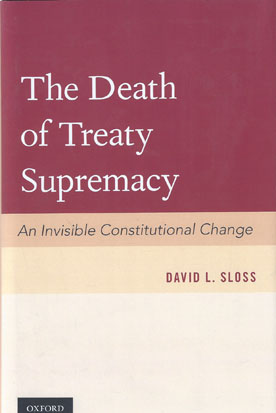
This book provides the first detailed history of the U.S. Constitution's treaty supremacy rule, describing a process of invisible constitutional change.
The traditional supremacy rule provided that all treaties supersede conflicting state laws, and precluded state governments from violating U.S. treaty obligations. In 1945, the U.S. ratified the UN Charter to obligate nations to promote human rights "for all without distinction as to race." This decision implied that the United States had effectively abrogated Jim Crow laws throughout the South.
In response, the Bricker Amendment was created to abolish the treaty supremacy rule, and although the amendment never passed, Bricker's supporters achieved their goals through de facto constitutional change. The de facto Bricker Amendment was ground-breaking, as it created a novel exception that permits state governments to violate non-self-executing treaties without authorization from the federal political branches.
This had significant implications for U.S. foreign policy and for U.S. compliance with its treaty obligations, ultimately leading to the demise of treaty supremacy.